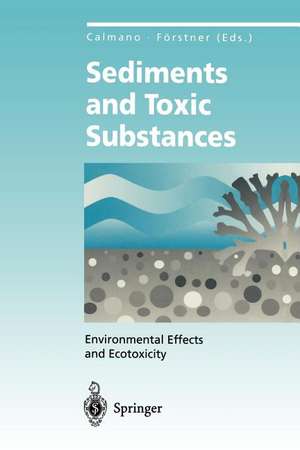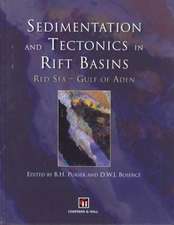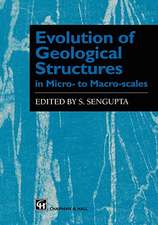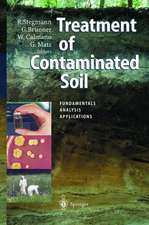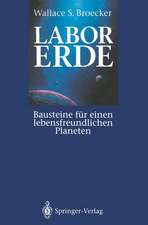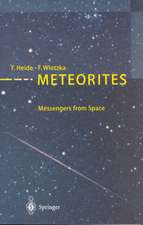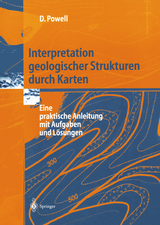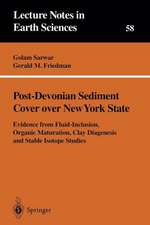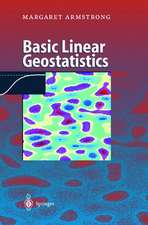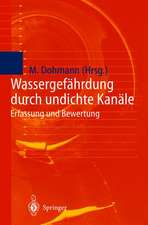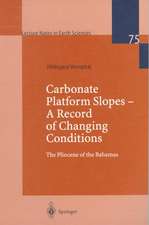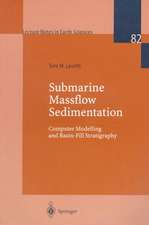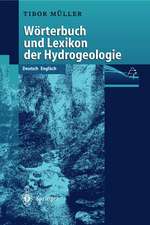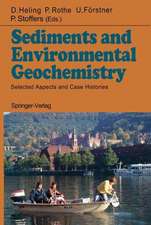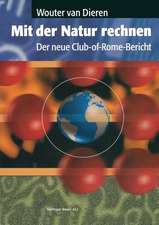Sediments and Toxic Substances: Environmental Effects and Ecotoxicity: Environmental Science and Engineering
Editat de Wolfgang Calmano, Ulrich Förstneren Limba Engleză Paperback – 30 dec 2011
Din seria Environmental Science and Engineering
- 18%
 Preț: 1238.42 lei
Preț: 1238.42 lei - 18%
 Preț: 2166.68 lei
Preț: 2166.68 lei - 18%
 Preț: 1420.88 lei
Preț: 1420.88 lei - 18%
 Preț: 914.20 lei
Preț: 914.20 lei - 18%
 Preț: 1225.94 lei
Preț: 1225.94 lei - 18%
 Preț: 1118.13 lei
Preț: 1118.13 lei - 18%
 Preț: 1402.74 lei
Preț: 1402.74 lei - 18%
 Preț: 3419.93 lei
Preț: 3419.93 lei - 18%
 Preț: 1223.55 lei
Preț: 1223.55 lei - 18%
 Preț: 1008.91 lei
Preț: 1008.91 lei - 18%
 Preț: 1234.46 lei
Preț: 1234.46 lei - 18%
 Preț: 1409.82 lei
Preț: 1409.82 lei - 18%
 Preț: 736.64 lei
Preț: 736.64 lei - 18%
 Preț: 949.73 lei
Preț: 949.73 lei - 18%
 Preț: 1287.47 lei
Preț: 1287.47 lei - 18%
 Preț: 2116.64 lei
Preț: 2116.64 lei - 18%
 Preț: 1231.95 lei
Preț: 1231.95 lei - 15%
 Preț: 641.71 lei
Preț: 641.71 lei - 23%
 Preț: 1129.32 lei
Preț: 1129.32 lei - 18%
 Preț: 1237.93 lei
Preț: 1237.93 lei - 18%
 Preț: 956.18 lei
Preț: 956.18 lei - 24%
 Preț: 1057.94 lei
Preț: 1057.94 lei - 24%
 Preț: 1079.09 lei
Preț: 1079.09 lei - 18%
 Preț: 953.03 lei
Preț: 953.03 lei - 18%
 Preț: 1233.06 lei
Preț: 1233.06 lei - 15%
 Preț: 666.73 lei
Preț: 666.73 lei - 18%
 Preț: 1222.31 lei
Preț: 1222.31 lei - 18%
 Preț: 1242.35 lei
Preț: 1242.35 lei - 18%
 Preț: 1232.89 lei
Preț: 1232.89 lei - 18%
 Preț: 1823.56 lei
Preț: 1823.56 lei - 18%
 Preț: 1228.96 lei
Preț: 1228.96 lei - 18%
 Preț: 1221.69 lei
Preț: 1221.69 lei - 18%
 Preț: 945.79 lei
Preț: 945.79 lei - 18%
 Preț: 1008.28 lei
Preț: 1008.28 lei - 24%
 Preț: 795.50 lei
Preț: 795.50 lei - 18%
 Preț: 1246.47 lei
Preț: 1246.47 lei - 18%
 Preț: 1239.85 lei
Preț: 1239.85 lei - 18%
 Preț: 957.62 lei
Preț: 957.62 lei - 18%
 Preț: 1244.89 lei
Preț: 1244.89 lei - 15%
 Preț: 640.55 lei
Preț: 640.55 lei - 18%
 Preț: 950.33 lei
Preț: 950.33 lei - 18%
 Preț: 1824.01 lei
Preț: 1824.01 lei - 15%
 Preț: 639.59 lei
Preț: 639.59 lei - 18%
 Preț: 947.50 lei
Preț: 947.50 lei - 18%
 Preț: 951.29 lei
Preț: 951.29 lei - 18%
 Preț: 1229.73 lei
Preț: 1229.73 lei
Preț: 391.40 lei
Nou
Puncte Express: 587
Preț estimativ în valută:
74.89€ • 81.61$ • 63.11£
74.89€ • 81.61$ • 63.11£
Carte tipărită la comandă
Livrare economică 23 aprilie-07 mai
Preluare comenzi: 021 569.72.76
Specificații
ISBN-13: 9783642798924
ISBN-10: 3642798926
Pagini: 352
Ilustrații: XII, 335 p.
Dimensiuni: 155 x 235 x 18 mm
Greutate: 0.49 kg
Ediția:Softcover reprint of the original 1st ed. 1996
Editura: Springer Berlin, Heidelberg
Colecția Springer
Seriile Environmental Science and Engineering, Environmental Science
Locul publicării:Berlin, Heidelberg, Germany
ISBN-10: 3642798926
Pagini: 352
Ilustrații: XII, 335 p.
Dimensiuni: 155 x 235 x 18 mm
Greutate: 0.49 kg
Ediția:Softcover reprint of the original 1st ed. 1996
Editura: Springer Berlin, Heidelberg
Colecția Springer
Seriile Environmental Science and Engineering, Environmental Science
Locul publicării:Berlin, Heidelberg, Germany
Public țintă
ResearchCuprins
1 Sediment Quality Assessment: Chemical and Biological Approaches.- Laboratory Studies.- 2 The Influence of Diagenetic Processes on the Exchange of Trace Contaminants at the Sediment-Water Interface.- 3 Interaction of Pesticides with River Sediments and Characterization of Organic Matter of the Sediments.- 4 Partitioning Behaviour of Phenols Between Water and Hydrophilic/Hydrophobic Interfaces.- 5 Sorption Properties of Biofilms.- 6 Ecotoxicity of Certain Heavy Metals Affecting Bacteria-Mediated Biogeochemical Pathways in Sediments.- 7 Bioassays on Sediment Toxicity.- Field Studies.- 8 Trace Element Diagenesis in Polluted Sediments of the River Elbe Estuary.- 9 Mercury Distribution and Speciation in a Polluted Fluvial System.- 10 Organotin Compounds in Sediments of the Rivers Elbe and Mulde.- Modelling Aspects.- 11 Advective Transport of Interacting Solutes: The Chromatographic Model.
Textul de pe ultima copertă
This book is the result of a research project on environmental behaviour of sediments. It represents one of the most comprehensive programs in the field of chemical and biological interactions of toxicants in sediments. It also provides valuable insights into the actual international state of sediment quality assessment and discusses various chemical and biological approaches to sediment toxicity. The understanding of interactions of toxic substances in sediments and of conditions controlling mobilization, transfer and bioavailability can be used to predict environmental fates and effects of chemicals. Such knowledge is essential to explain the limitations of existing water quality regulations and will help to set up appropriate sediment quality criteria.
